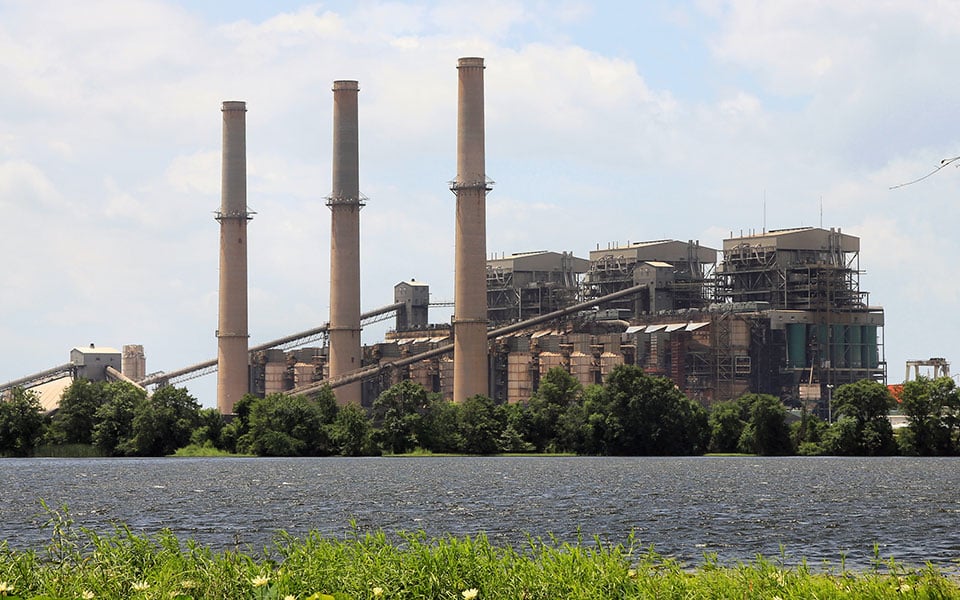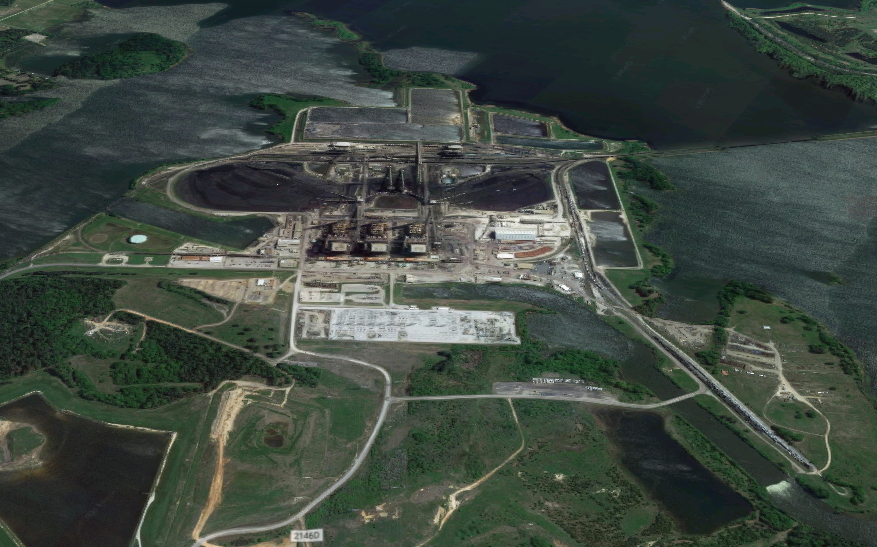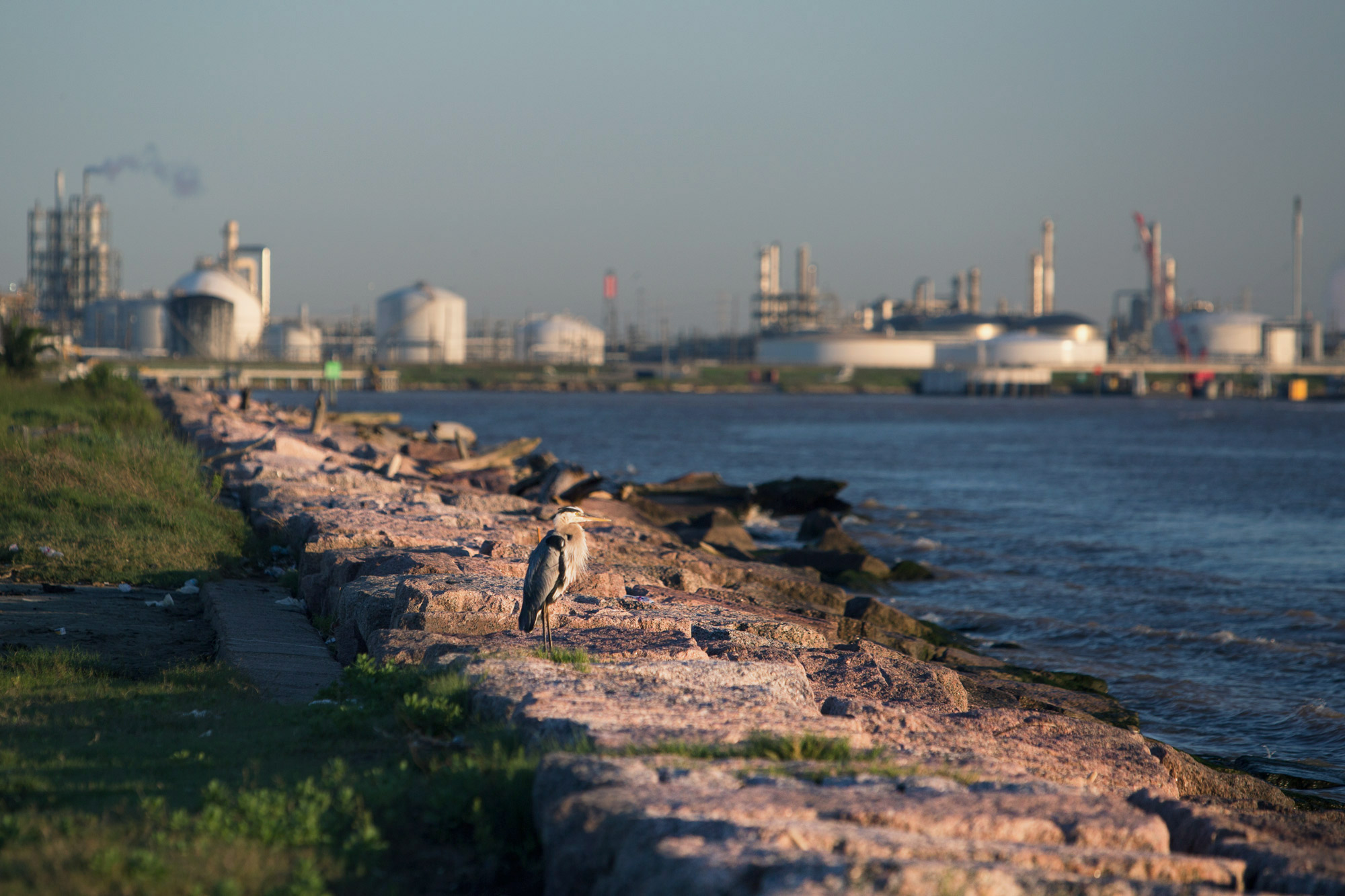
The Creature of Martin Creek Lake Won’t Die
The Martin Lake coal plant in East Texas is the biggest sulfur dioxide polluter in the nation. And unlike other regional super-polluters, this one is still chugging along.

From above, the Creature takes the shape of a spider: Its eyes are smokestacks, its legs spindly railways stretching from the semicircle of clearcut pines into the East Texas woods beyond. Given its proximity to Martin Creek Lake—a popular fishing and boating spot just south of it—the Creature might as well have skittered ashore ages ago, plopping down on the first stretch of dry land it found: the town of Tatum, population 1,400, located less than an hour from the Louisiana border. The Creature (formally known as the Martin Lake Steam Electric Station) came here in 1978 and has reliably chewed lignite and belched acrid smoke ever since. The coal-fired power plant is also a reliable polluter, releasing 25,400 tons of sulfur dioxide into the air each year, more than any other coal plant in the United States.
Environmental activists have been after the plant for years, with movement on the matter as recently as last month, when the Sierra Club said it would file a new lawsuit over the plant’s pollution.
The sulfur dioxide and particulate matter expelled by the Creature can cause swollen lungs and acute breathing problems. Each year, 100 premature deaths are linked to the facility; it costs $1 billion in public health expenses annually, according to a health report submitted by the Sierra Club to the Environmental Protection Agency (EPA). Beneath the soil, the plant’s toxic ash lagoons have leaked boron, cobalt, and manganese into groundwater sources.
Despite the environmental concerns, and the larger issue of waning interest in coal-generated power globally, the Creature of Martin Creek Lake just won’t die.

This part of Texas, bordered by the Metroplex to the west and Louisiana to the east, has been a coal powerhouse since the 1970s, when the nation saw a huge expansion of coal-power generation. But in the last few years, due to regulatory and market factors, some of the legacy East Texas plants have gone dark. Monticello, a 760-megawatt plant near Mount Pleasant, was put on the path to retirement in 2017. In Fairfield, the 1,195-megawatt Big Brown plant was retired last year. One unit at the 1,056-megawatt Welsh plant was retired in 2016. Executives said cheap natural gas and renewables were eating into coal’s market share; new environmental regulations would force plant operators to invest in pollution control equipment that would further limit profit margins.
But for whatever reason, the Creature remains. It appears to be impervious to the vagaries of the energy generation market. Lawsuits and court orders seem only to embolden it. “They wouldn’t be running it if it weren’t making money,” said Luke Metzger, director of Environment Texas. “But certainly with the low cost of natural gas, it is an outlier.”
One explanation for the plant’s longevity, said Sierra Club attorney Joshua Smith, is “a very tight reserve margin” in the Texas energy market. This summer, when a heat wave pushed energy demand to a record high, the state electric grid operator called on remaining energy generators to put out more juice. The Creature was happy to send extra power. Peak demand times “will likely help Martin Lake stay afloat for a couple more years until more, cheaper resources come online,” Smith said. He also said the plant (with the help of industry-friendly regulators) has successfully batted down new, money-losing rules meant to cap pollution.
“They wouldn’t be running it if it weren’t making money. But certainly with the low cost of natural gas, it is an outlier.”
In late 2016, the EPA ruled that air quality in rural Rusk County, where the Creature resides, was so contaminated that it no longer met federal air quality standards for sulfur dioxide. The ruling could have forced plant operators to install new pollution controls, but the Texas Commission on Environmental Quality refused to submit a cleanup plan to the EPA, stalling the effort. The Creature’s sulfur dioxide emissions have since ramped up.
“Any time polluters have to pay for pollution, it’s going to increase their cost,” said Joshua Rhodes, who studies energy markets at Vibrance Energy in Colorado and works part-time at the Energy Institute at the University of Texas. “If it were required to do additional pollution mitigation measures, it would possibly change their determination of the viability of the plant itself.”
Meranda Cohn, a spokesperson for Vistra Energy, which owns the Creature, said a planned change could cut down on sulfur dioxide emissions. She said the company has started transitioning from locally mined lignite—the lowest-grade coal, which is particularly inefficient at producing heat—to a coal with relatively low sulfur content from Montana and Wyoming. Cohn would not disclose when the transition would be complete. The company’s plan to secure a new coal source is dubious; after years of falling production and financial problems, the future is uncertain for the country’s most productive strip mine.
So how much life does the facility have left in it? Rhodes said a retirement announcement could come as quickly as within the next five years—Texas already produces the most wind energy in the nation, and with the state continuing to build out infrastructure for renewables, coal’s market position should slip even lower. The plant may also reach the end of its “useful life” in that time period, Rhodes said.
Until then, some East Texans will be gasping for breath, waiting for the day when the Creature of Martin Creek Lake finally dies.
Read more from the Observer:
-
The Green New Deal Can Exist in Texas: The state has already shown what can be accomplished when renewable energy is prioritized. Now, Texans want to take action. Do lawmakers?
-
Trump’s USDA Lets Animal Abusers Off the Hook: A South Texas facility has been repeatedly penalized for violating animal treatment standards. Under newly loosened rules, will it and other offenders be held to account next time?
-
Climate Change Will Make Harmful Algae Blooms in Texas Waterways More Common: Blue-green algae exists in almost all of the state’s waterways. Once it starts to bloom, it’s hard to get rid of it.


